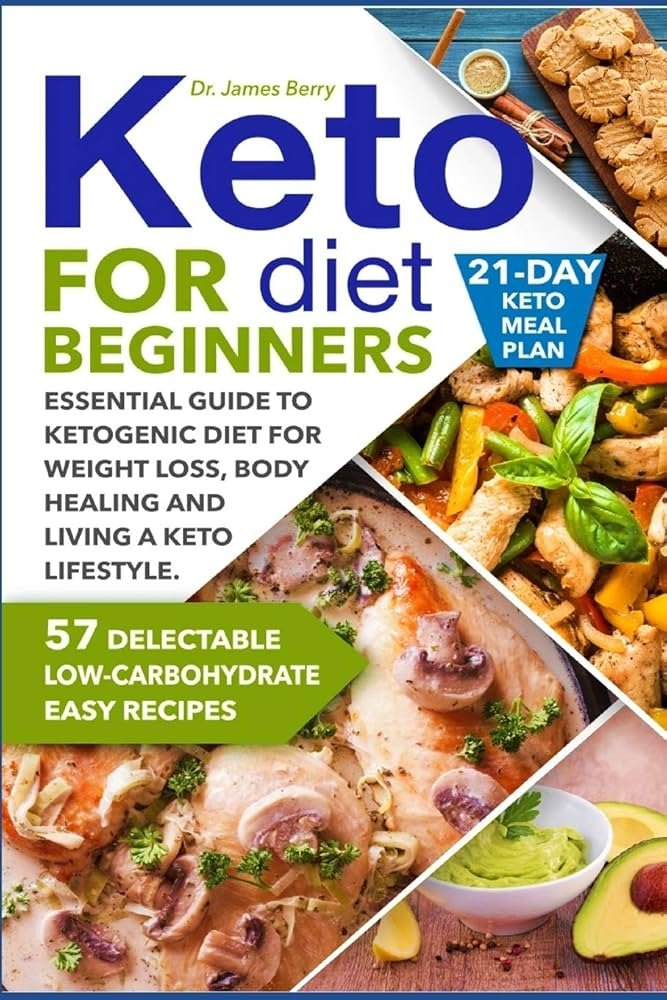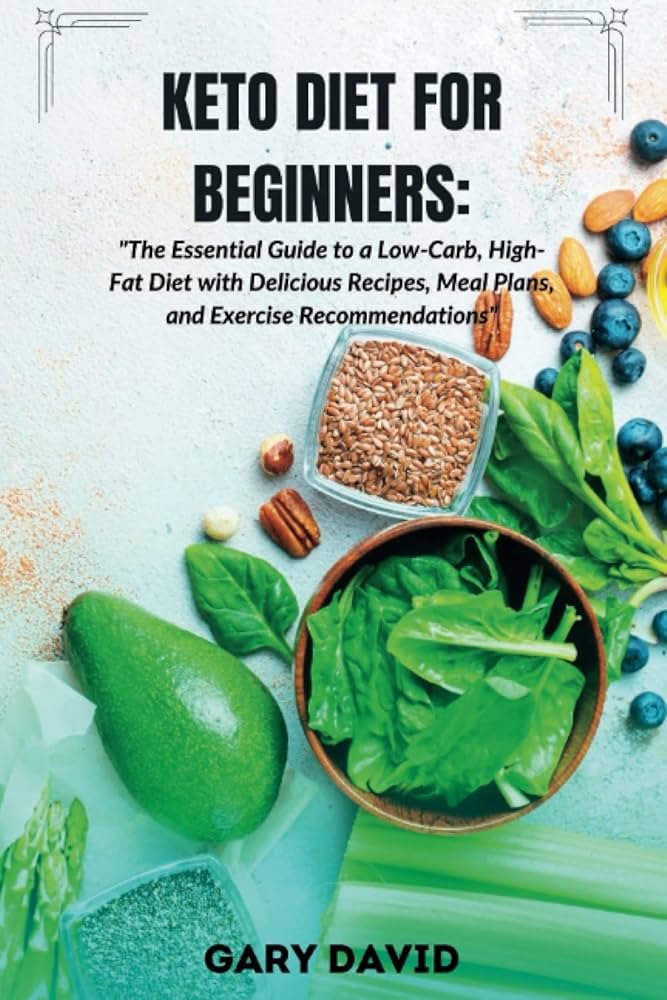Have you ever wondered how a diet that includes high amounts of fat could help you lose weight and increase your energy levels? The ketogenic diet, commonly known as the keto diet, may seem unconventional at first, but it has been gaining popularity for its unique approach to healthy eating.

What is the Keto Diet?
At its core, the keto diet is a low-carbohydrate, high-fat diet designed to shift your body’s primary source of energy from carbohydrates to fats. When you drastically reduce your carbohydrate intake and replace it with fat, your body enters a metabolic state called ketosis. In this state, your body becomes incredibly efficient at burning fat for energy and can also turn fat into ketones in the liver, which can supply energy to the brain.
Keto isn’t just about reducing carbs; it’s about finding a balance that creates a specific metabolic state. By understanding how your body reacts to different types of food, you can harness the power of ketosis and enjoy a number of potential health benefits.
The Benefits of the Keto Diet
You might be curious about what benefits the keto diet could offer. Here are some of the more well-documented advantages:
Weight Loss
Many individuals turn to the keto diet for weight loss. When your body runs on fat instead of carbohydrates, you may find that you’re able to shed pounds more easily. This is partly due to the appetite-suppressing effects of ketosis, which can help you consume fewer calories overall.
Improved Mental Clarity
While it might sound surprising, many fans of the keto diet report enhanced mental clarity and focus. This could be attributed to the steady supply of energy ketones provide for the brain, in contrast to the quick spikes and drops of glucose from carbs.
Increased Energy Levels
Many people experience a boost in energy levels once they become fat-adapted. Unlike the short bursts of energy that carbohydrates provide, the fat stores in your body can provide a more consistent energy source throughout the day.
Better Blood Sugar Control
For those managing diabetes or insulin resistance, the keto diet may help stabilize blood sugar levels. By reducing carb intake, you may experience fewer blood sugar spikes and crashes.
How to Get Started on the Keto Diet
So, you’re intrigued by the keto diet and want to give it a try. The following sections will help you understand how to get started effectively.
Understanding Macronutrients
To adopt the keto diet, you need to have a solid grasp of macronutrients: fats, proteins, and carbohydrates. The typical macronutrient breakdown for a standard keto diet is approximately:
| Macronutrient | Percentage of Daily Intake |
|---|---|
| Fat | 70% – 75% |
| Protein | 20% – 25% |
| Carbohydrates | 5% – 10% |
This breakdown ensures that your body enters ketosis while still getting the nutrients it requires. It’s essential to focus on healthy fats, such as avocado, nuts, seeds, olive oil, and fatty fish.
Choosing the Right Foods
Understanding what foods to include in your diet is crucial for success. Here are some examples of foods to embrace and those to avoid:
| Foods to Enjoy | Foods to Avoid |
|---|---|
| Avocados | Bread and pasta |
| Eggs | Sugar and sweeteners |
| Nuts and seeds | Starchy vegetables (like potatoes) |
| Fatty fish | Most fruits |
| Non-starchy vegetables (like spinach and kale) | Processed snacks |
Meal Planning
Meal planning can simplify your transition to the keto diet. Having a plan in place allows you to stay within your macronutrient limits and resist the temptation of quick, carb-heavy snacks. Take the time each week to outline your meals and snacks ahead of time.
Sample Keto Meal Plan
Here’s an example of a simple one-day meal plan to inspire you:
| Meal | Foods |
|---|---|
| Breakfast | Scrambled eggs with spinach and cheese |
| Snack | Celery sticks with almond butter |
| Lunch | Grilled chicken salad with olive oil |
| Snack | A handful of mixed nuts |
| Dinner | Salmon with asparagus and butter |
This meal plan emphasizes a variety of nutrient-dense foods while keeping your carb count low. Remember, there are endless recipe options available online, so don’t hesitate to get creative in the kitchen!
Transitioning to Keto: What to Expect
Transitioning to keto isn’t always a walk in the park. As your body adapts to using fat for fuel instead of carbohydrates, there may be a rough patch you encounter.
Keto Flu
While adjusting to the keto lifestyle, some people experience symptoms that are commonly referred to as the “keto flu.” This can include headaches, fatigue, and irritability. The symptoms typically last for a few days to a week as your body adapts, so be prepared for this adjustment phase.
Tips to Reduce Keto Flu Symptoms
- Stay Hydrated: Drinking plenty of water can help reduce symptoms and improve overall well-being.
- Increase Electrolyte Intake: Low carbohydrate intake can lead to a drop in sodium, potassium, and magnesium levels. Incorporating these electrolytes through your diet can help, or consider supplements if necessary.
- Get Enough Sleep: Quality sleep is crucial for your body’s adaptations, so ensure that you’re getting enough rest.
Long-term Changes
Once your body adjusts, you may feel more energetic and mentally clear, but don’t forget that the keto diet is a lifestyle change. Embrace the new eating habits, but also stay mindful of how your body reacts as you adjust.

Common Mistakes to Avoid
As with any new diet, there are pitfalls to watch out for to ensure your success on the keto diet. Here are common mistakes and how to avoid them:
Overlooking Hidden Carbs
Even when you’re diligent, it’s easy to overlook hidden carbohydrates found in sauces, dressings, and prepared foods. Always check labels and be aware of the carb content in everything you consume.
Not Getting Enough Fiber
Low-carb diets can sometimes lead to reduced fiber intake, which is essential for digestive health. Make sure to include non-starchy vegetables to help meet your fiber needs.
Forgetting to Monitor Macros
Tracking your macronutrient intake can be vital during your first few weeks on the keto diet. Use an app or a food journal to help you stay within the appropriate ranges until you become more familiar with portion sizes.
Drinking Insufficient Water
When you cut carbs, your body sheds water weight, which can lead to dehydration. Ensure you’re drinking enough water throughout your day to stay properly hydrated.
Real-Life Success Stories
Sometimes, you just need a little motivation to keep going. Millions of people have turned to keto and successfully transformed their lives. Stories abound of individuals losing weight, feeling more energized, and even improving their overall health conditions. Remember, your journey can be unique to you.

What to Expect Long-term
Just like any lifestyle change, the key to success is finding what works best for you. Many people find that the keto diet becomes second nature with time. Here are a few long-term benefits to anticipate:
Sustainable Weight Management
Once you achieve your weight goals, many individuals find it easier to maintain their weight on a keto diet. By staying in tune with your body, you can adapt your food choices as necessary.
Eating Out on Keto
Although navigating restaurants can be tricky, more establishments are accommodating patrons following the keto diet. Don’t hesitate to ask for modifications or inquire about ingredients when ordering.
Community Support
Once you start your keto journey, you might consider joining online forums, local groups, or social media communities. Many people share tips, recipes, and support one another in their keto adventures.
Keeping Yourself Motivated
Staying motivated is essential in any diet or lifestyle change. Here are some effective strategies:
Set Realistic Goals
Rather than aiming for rapid weight loss, focus on setting achievable short-term objectives. Celebrate small successes along the way, as this can motivate you to keep pushing forward.
Track Your Progress
Keeping a journal of your food habits, weekly weigh-ins, or even photos can help you visually see your progress and stay motivated.
Find Your “Why”
Remind yourself why you started your keto journey. Whether it’s to achieve better health, feel more energized, or fit into your favorite clothes, holding onto your “why” can reignite your determination during tougher times.

Conclusion: Your Keto Adventure Begins
Stepping into the keto lifestyle is like starting a new adventure for your health and well-being. By understanding the fundamentals of the keto diet, preparing adequately, and being aware of potential pitfalls, you can set yourself up for success. Remember, everyone’s journey is unique—so embrace your path, and enjoy discovering how your body responds to this healthy way of eating. You possess the ability to shape your lifestyle and create a healthier, more vibrant you. Happy keto eating!

